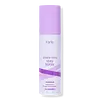Tarte Shape Tape Stay Spray Setting Spray Versus Fenty Beauty Pro Filt’r Soft Matte Longwear Liquid Foundation
What's inside
What's inside
 Key Ingredients
Key Ingredients

 Benefits
Benefits

 Concerns
Concerns

 Ingredients Side-by-side
Ingredients Side-by-side

Water
Skin ConditioningAlcohol Denat.
AntimicrobialPvp
Emulsion StabilisingPropanediol
SolventDimethicone PEG-7 Phosphate
CleansingPolysorbate 20
EmulsifyingPhenoxyethanol
PreservativeHydroxyacetophenone
AntioxidantParfum
MaskingPoloxamer 407
EmulsifyingPentylene Glycol
Skin ConditioningAloe Barbadensis Leaf Extract
EmollientCucumis Sativus Fruit Extract
EmollientMethyl Diisopropyl Propionamide
MaskingEthylhexylglycerin
Skin ConditioningSodium Hydroxide
BufferingLinalool
PerfumingPPG-3 Benzyl Ether Myristate
EmollientPolyhydroxystearic Acid
EmulsifyingHexyl Cinnamal
PerfumingEthylhexyl Isononanoate
EmollientIsononyl Isononanoate
EmollientSodium Cocamidopropyl Pg-Dimonium Chloride Phosphate
CleansingBenzyl Salicylate
PerfumingPhenylpropanol
MaskingCaprylyl Glycol
EmollientTocopherol
AntioxidantPentaerythrityl Tetra-Di-T-Butyl Hydroxyhydrocinnamate
AntioxidantWater, Alcohol Denat., Pvp, Propanediol, Dimethicone PEG-7 Phosphate, Polysorbate 20, Phenoxyethanol, Hydroxyacetophenone, Parfum, Poloxamer 407, Pentylene Glycol, Aloe Barbadensis Leaf Extract, Cucumis Sativus Fruit Extract, Methyl Diisopropyl Propionamide, Ethylhexylglycerin, Sodium Hydroxide, Linalool, PPG-3 Benzyl Ether Myristate, Polyhydroxystearic Acid, Hexyl Cinnamal, Ethylhexyl Isononanoate, Isononyl Isononanoate, Sodium Cocamidopropyl Pg-Dimonium Chloride Phosphate, Benzyl Salicylate, Phenylpropanol, Caprylyl Glycol, Tocopherol, Pentaerythrityl Tetra-Di-T-Butyl Hydroxyhydrocinnamate
Water
Skin ConditioningDimethicone
EmollientTalc
AbrasivePEG-10 Dimethicone
Skin ConditioningTrimethylsiloxysilicate
EmollientPolypropylene
Isododecane
EmollientCetyl PEG/PPG-10/1 Dimethicone
EmulsifyingNylon-12
Hdi/Trimethylol Hexyllactone Crosspolymer
Phenoxyethanol
PreservativeSodium Chloride
MaskingHydrogen Dimethicone
Glycerin
HumectantMagnesium Sulfate
Sodium Dehydroacetate
PreservativeDisteardimonium Hectorite
StabilisingAluminum Hydroxide
EmollientMethicone
EmollientBenzoic Acid
MaskingDehydroacetic Acid
PreservativePropylene Carbonate
SolventEthylhexylglycerin
Skin ConditioningParfum
MaskingSilica
AbrasiveBiosaccharide Gum-4
Skin ConditioningAnanas Sativus Fruit Extract
Skin ConditioningCarica Papaya Fruit Extract
Skin ConditioningPaullinia Cupana Seed Extract
Skin ConditioningPotassium Sorbate
PreservativeSorbic Acid
PreservativeWater, Dimethicone, Talc, PEG-10 Dimethicone, Trimethylsiloxysilicate, Polypropylene, Isododecane, Cetyl PEG/PPG-10/1 Dimethicone, Nylon-12, Hdi/Trimethylol Hexyllactone Crosspolymer, Phenoxyethanol, Sodium Chloride, Hydrogen Dimethicone, Glycerin, Magnesium Sulfate, Sodium Dehydroacetate, Disteardimonium Hectorite, Aluminum Hydroxide, Methicone, Benzoic Acid, Dehydroacetic Acid, Propylene Carbonate, Ethylhexylglycerin, Parfum, Silica, Biosaccharide Gum-4, Ananas Sativus Fruit Extract, Carica Papaya Fruit Extract, Paullinia Cupana Seed Extract, Potassium Sorbate, Sorbic Acid
 Reviews
Reviews

Ingredients Explained
These ingredients are found in both products.
Ingredients higher up in an ingredient list are typically present in a larger amount.
Ethylhexylglycerin (we can't pronounce this either) is commonly used as a preservative and skin softener. It is derived from glyceryl.
You might see Ethylhexylglycerin often paired with other preservatives such as phenoxyethanol. Ethylhexylglycerin has been found to increase the effectiveness of these other preservatives.
Parfum is a catch-all term for an ingredient or more that is used to give a scent to products.
Also called "fragrance", this ingredient can be a blend of hundreds of chemicals or plant oils. This means every product with "fragrance" or "parfum" in the ingredients list is a different mixture.
For instance, Habanolide is a proprietary trade name for a specific aroma chemical. When used as a fragrance ingredient in cosmetics, most aroma chemicals fall under the broad labeling category of “FRAGRANCE” or “PARFUM” according to EU and US regulations.
The term 'parfum' or 'fragrance' is not regulated in many countries. In many cases, it is up to the brand to define this term.
For instance, many brands choose to label themselves as "fragrance-free" because they are not using synthetic fragrances. However, their products may still contain ingredients such as essential oils that are considered a fragrance by INCI standards.
One example is Calendula flower extract. Calendula is an essential oil that still imparts a scent or 'fragrance'.
Depending on the blend, the ingredients in the mixture can cause allergies and sensitivities on the skin. Some ingredients that are known EU allergens include linalool and citronellol.
Parfum can also be used to mask or cover an unpleasant scent.
The bottom line is: not all fragrances/parfum/ingredients are created equally. If you are worried about fragrances, we recommend taking a closer look at an ingredient. And of course, we always recommend speaking with a professional.
Learn more about ParfumPhenoxyethanol is a preservative that has germicide, antimicrobial, and aromatic properties. Studies show that phenoxyethanol can prevent microbial growth. By itself, it has a scent that is similar to that of a rose.
It's often used in formulations along with Caprylyl Glycol to preserve the shelf life of products.
Water. It's the most common cosmetic ingredient of all. You'll usually see it at the top of ingredient lists, meaning that it makes up the largest part of the product.
So why is it so popular? Water most often acts as a solvent - this means that it helps dissolve other ingredients into the formulation.
You'll also recognize water as that liquid we all need to stay alive. If you see this, drink a glass of water. Stay hydrated!
Learn more about Water